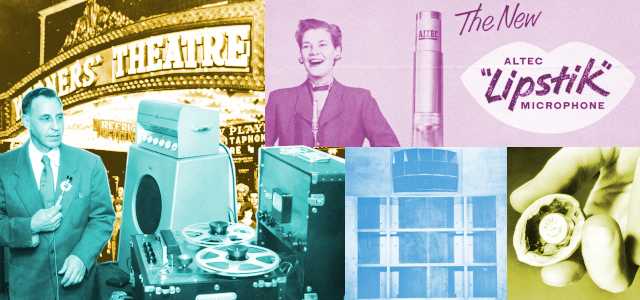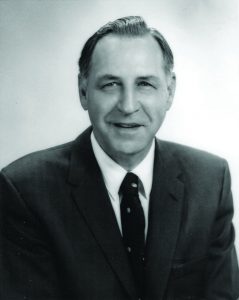
John Kenneth Hilliard was born October 22, 1901, in the small rural community of Wyndmere, Richland County ND, which is in the southeastern portion of the state and not too far removed from the Minnesota border. He was the youngest of six children born to Milton L. and Elizabeth N. Hilliard; his siblings included four brothers and a sister.
Both parents came from Clarion County PN, and had settled in Wyndmere at some earlier, undisclosed time.1 Although John’s father’s occupation is not a matter of record, they were obviously not an impoverished family, inasmuch as the children apparently received good educations and young John was able to gain a college degree followed by post-graduate work at the University of Minnesota.
An Education In Physics
Not too much is known about Hilliard’s younger days or what might have prompted him to pursue an education in physics. However, by 1920, directly after being graduated from Paul Park Minnesota High School, we find him enrolled in Hamlin University in Saint Paul MN, earning a BS in Physics in 1925. Immediately thereafter, he enrolled at the University of Minnesota to pursue his graduate work in the field of electrical engineering with a stated emphasis in radio and acoustics.2 His exploits during his university days included work on establishing the university radio station WLB, and in developing a “dial-up” remote transmitter control circuit for local radio station WCCO.
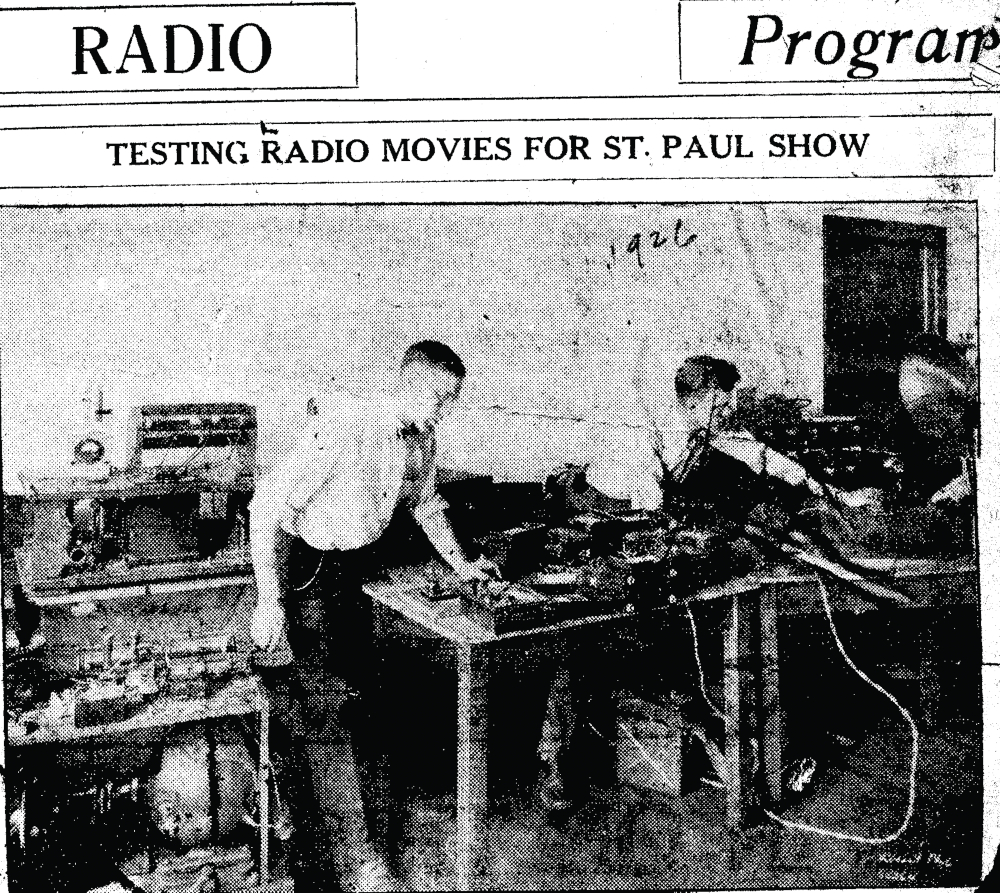
1928 was a gratifying, if somewhat hectic, year for young John Hilliard: He received a BSEE and started work on his Master’s degree, got married, went to work as a radio engineer for WCCO, then received a telegraphic offer for employment at United Artist Studios (at considerably more money than what WCCO could afford) and set out for California.
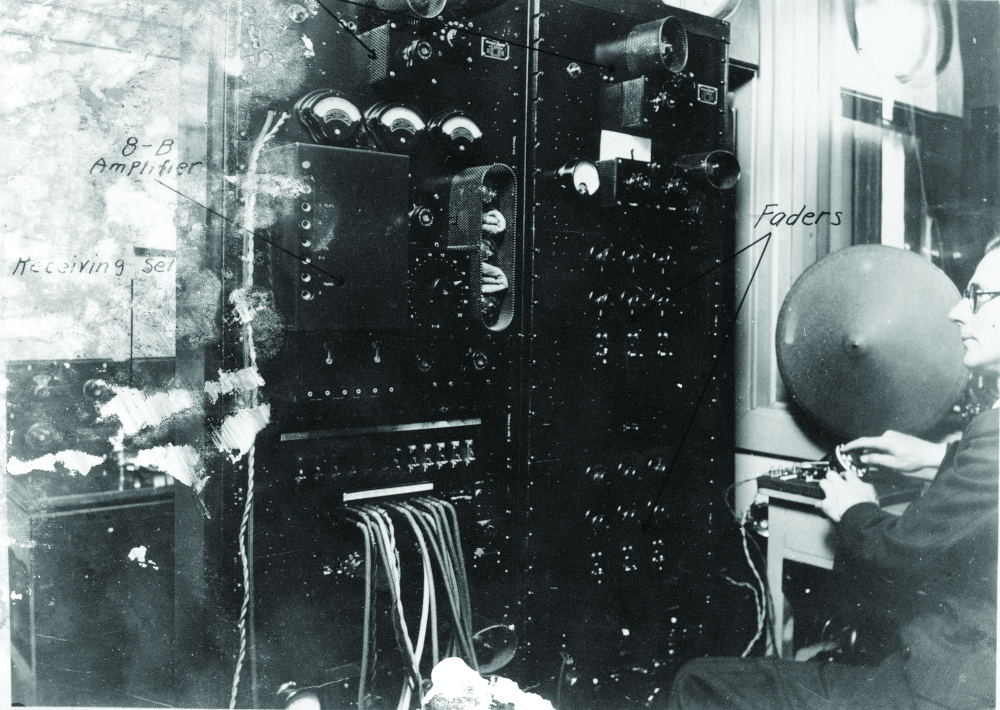
Based on an examination of Hilliard’s personnel files dated 19523, it is apparent that his parents, brothers and sister, and his wife’s widowed mother moved lock-stock-and barrel to Southern California. His mother’s death is noted as having occurred in 1929, with a last known address in Long Beach CA. Inasmuch as John Hilliard moved to the Los Angeles area in 1928, it can be assumed that his family either moved with him or followed directly in his footsteps.
Hollywood Beckons
1926 was a watershed year for the motion picture industry. In August of that year, Warner Brothers’ Vita-Phone sound process for motion pictures was premiered in the film Don Juan, starring John Barrymore. True, that picture featured only a recorded orchestral accompaniment without any dialog, but the flickering images no longer emanated from a “silent” screen. Critics panned the film but expounded exuberantly about the sound aspect.
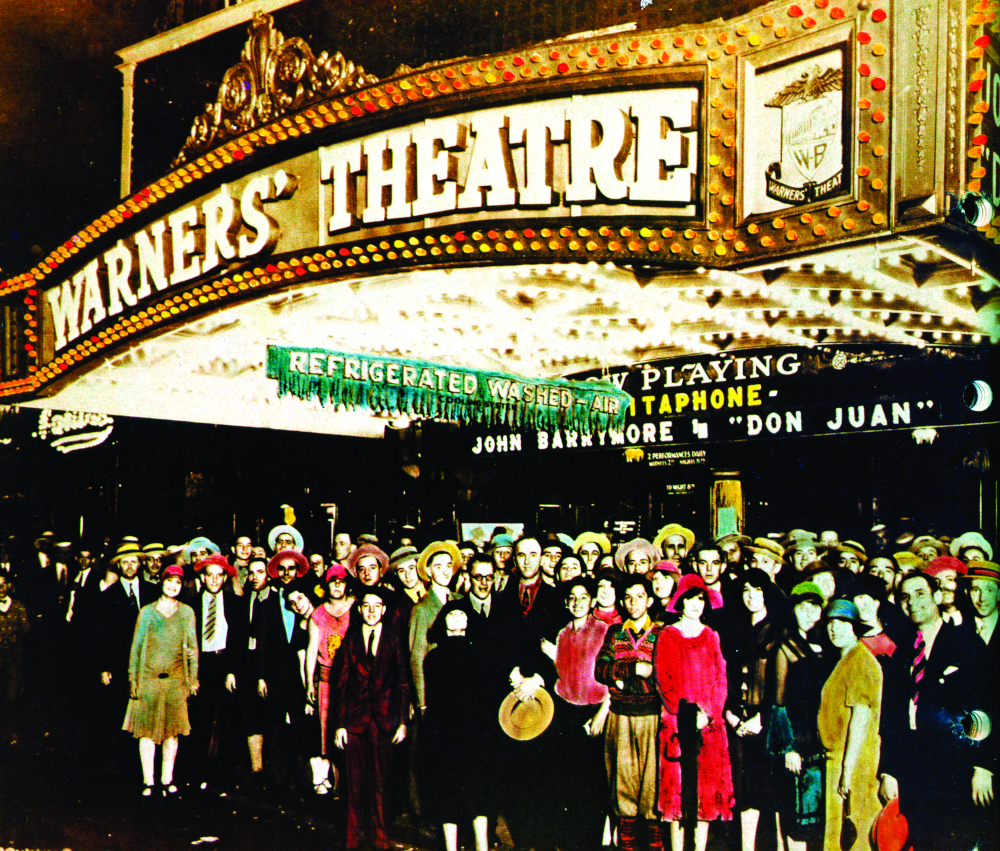
In April 1927, The Jazz Singer, starring Al Jolson, was put into production and released to the public in New York City on October 6. Admittedly, The Jazz Singer contained only 26 words of dialog, but Jolson’s adlib line, “You ain’t heard nothin’ yet,” was prophetic. Moviegoers were smitten and the race was on to convert Hollywood productions into “talkies.”
‘Sound directors, transmission engineers and recording staffs were recruited from the broadcast industry, the telephone companies, phonograph recording companies and any related field since there were few sound experts, and none with talking picture experience.’
In 1926, there were virtually no soundmen in the Hollywood Studios. As Hilliard was to reminisce in an article some 50 years later: “In January of 1927, Electrical Research Products, Inc. (ERPI), was formed as a subsidiary of the (WE) Company to handle commercial relations with the motion picture producers and exhibitors….* One can only imagine the intense activity resulting from the ensuing contracts between the [motion picture] producers and ERPI for licenses and recording equipment. Western Electric utilized all of its telephone plant manufacturing facilities at Kearney NJ, and the Hawthorne plant in Chicago to produce [the equipment in demand]….Sound directors, transmission engineers and recording staffs were recruited from the broadcast industry, the telephone companies, phonograph recording companies and any related field since there were few sound experts, and none with talking picture experience.4”
[*Note: In a joint venture arrangement, Warner Bros technically still owned a portion of the Vita-Phone process from an earlier transaction, but ERPI quickly bought its interest back.]
Canvassing For Talent
Hilliard could never be accused of being a shy man but, in this case, perhaps modesty precluded him from mentioning that the studios were also frantically canvassing the country’s universities for promising talent to staff their woefully inadequate sound and recording departments. Hilliard himself was a target for recruiters and, having succumbed to the glitter of Hollywood, in September 1928 he and his new bride, Jessamine (the former Miss Opfer), boarded a ship and set sail from New Orleans for California, where he would join the staff at United Artists Studio (UA) as a transmission engineer in charge of the recording operations.
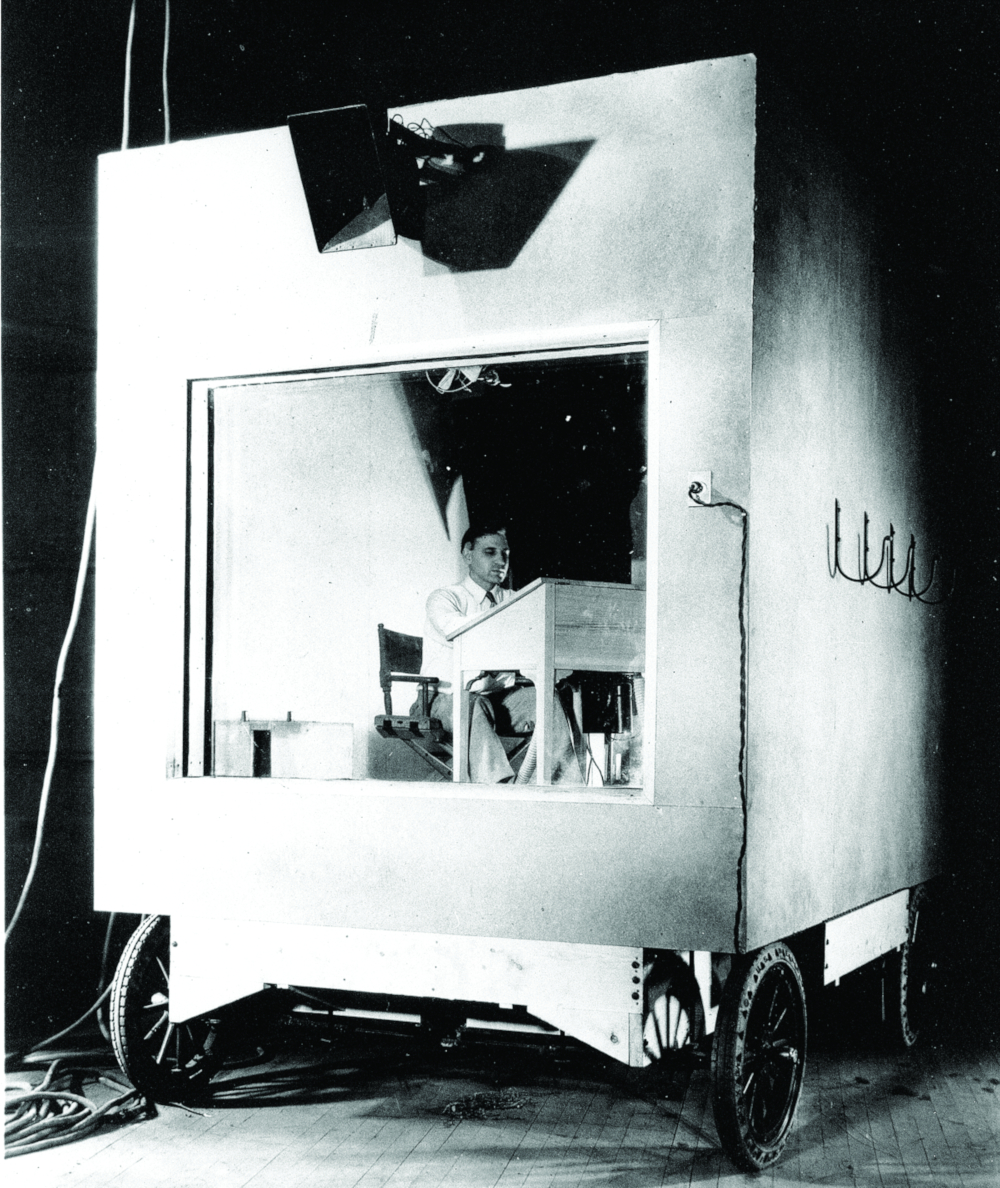
Upon arriving at UA, he found conditions in a frantic and chaotic state: The sound stages designed by Dr. Vern Knudsen (see “Industry Pioneers #7: Vern Knudsen, Academic Acoustician & ASA Founding Member”) and construction materials were everywhere; truckloads of equipment from Western Electric were arriving daily; and everyone had more than their share of work to do because UA’s first talking picture, Coquette, starring Mary Pickford and Douglas Fairbanks, was scheduled to start production in November.
Equipping And Training An Industry
The studios were frantic for experienced sound technicians to the point that the eight major film producers funded the Academy of Motion Picture Arts and Sciences to conduct night schools that saw as many as 900 students at a time. Meanwhile, ERPI and RCA were feeling the crunch for experienced technicians to install and maintain sound and projection equipment in the rash of cinemas being converted for the “talkies.”
By the end of 1929, ERPI and RCA, between them, had equipped more than 5,000 theaters in the United States and 2,000 cinemas abroad—in the space of less than 15 months. The Academy rushed a textbook5 into print, of which John Hilliard was one of the authors. Consider for a moment: Here was a man who had never seen a film recording studio only two years prior, who was now writing a definitive text on motion picture sound recording principles. Everyone involved in the burgeoning motion picture industry was on a steep learning curve.
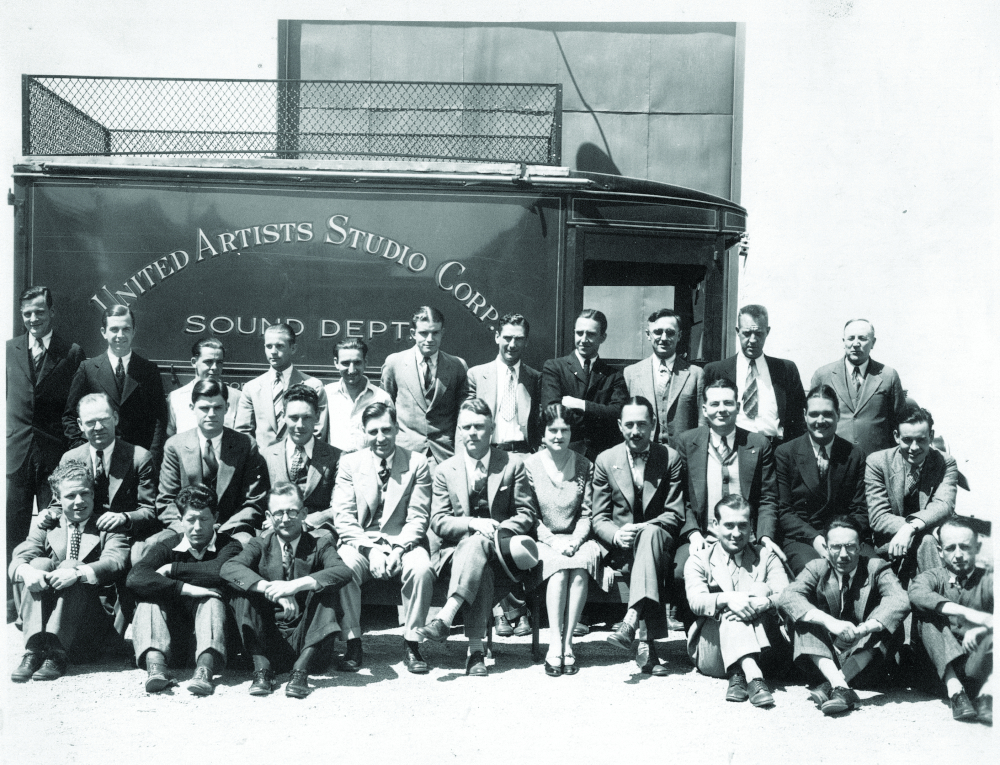
Technical problems arose on a continuing basis. Hilliard’s employer, United Artists, was beseeching him to find solutions to recording anomalies, transmission delay distortion-producing characteristics and vacuum tube microphonics that were an inherent condition of the then-in-use filamentary-type vacuum tubes.
The Academy rushed a textbook into print, of which John Hilliard was one of the authors. Here was a man who had never seen a film recording studio only two years prior, who was now writing a definitive text on motion picture sound recording principles.
Neither Western Electric nor any others had any experience in creating full-length feature films. The studios were faced with finding ways to edit and produce the hundreds of prints required for simultaneous exhibition. Dubbing facilities had to be designed and implemented that would synchronize music, sound effects and original dialog into suitable “release” prints. To sense the frantic pace, one need only be aware that most of the major studios were adhering to a rigorous schedule that called for the release of 52 feature films a year…one a week.
No Real Standards
No real standards existed, and each studio took a “roll-your-own” approach. This lack of standards and the attendant incompatibility of disc versus optical sound tracks, and even variances in how sound-head light valves would be implemented, meant that films using rival production techniques were not interchangeable between competing theater chains. It reached a point where RCA had to buy its own theater chain in order to show films using its proprietary PhotoPhone process.6
Further confusing the issue, Fox Movietone and Pathè adhered to their own proprietary systems. It became apparent that some semblance of order had to be brought to bear, and the Academy of Motion Picture Arts and Sciences embarked on a standardization process—a process in which John K. Hilliard would be an instrumental participant.
The Research Council of the Academy of Motion Picture Arts and Sciences was organized in 1934, with Hilliard designated as chairman. The council’s expressed aim was to cooperatively coordinate the sound recording quality within the major studios, and to provide information on adjustment of theater equipment for a commercially acceptable quality level.
The Test Reel
From 1934 well into the 1950s, the Research Council promulgated standardized test films and reams of published technical papers, all of which were duly recorded in the Academy’s publications and the SMPE (Society of Motion Picture Engineers) Journal. Hilliard was to comment on this aspect of his activities as follows: “Early in the program, a test reel was assembled using a short length of a regular release print from each of the studios. This test reel proved to be so valuable that prints were made available to service companies, equipment manufacturers and theaters. By using this method [the test reel], theater equipment was adjusted on a uniform quality basis taking into consideration the equipment being furnished, the acoustics of the auditorium and the loudspeaker characteristics. Power requirements [and acoustical considerations] for theaters based on size were also standardized.7, 8”
‘By using this method [the test reel], theater equipment was adjusted on a uniform quality basis taking into consideration the equipment being furnished, the acoustics of the auditorium and the loudspeaker characteristics. Power requirements [and acoustical considerations] for theaters based on size were also standardized.’
Always a prolific author and an adroit organizer, between 1934 and 1941, Hilliard was to author a constant stream of technical papers and bulletins on behalf of the Academy, and personally addressed any number of exhibitor councils on practically every aspect of sound recording/reproduction for motion pictures. All of this activity would culminate in his 1938 definitive book on the subject of motion picture sound equipment design and applications.9
Advancements At MGM
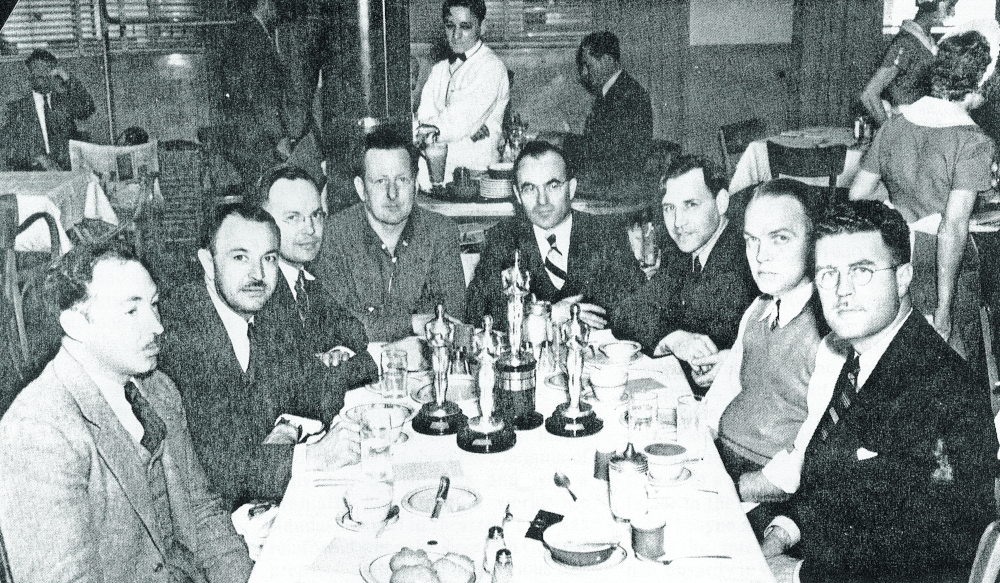
In 1933, Hilliard moved over to Metro-Goldwyn-Mayer (MGM), where he remained until 1941. During his time there, he was involved in many of the technological advancements accomplished by the motion picture industry of the 1930s. His initial assignment at MGM was to address the distortion caused by phase shift in sound recording amplifiers. These amplifiers, which, indeed, were adaptations of earlier PA devices, had been in continuous production since 1923 with no appreciable modifications.
Likewise, the transformers used in the 600Ω transmission networks were of suspect quality. He and his staff deduced that the solution laid in the incorporation of transformers having a very high self-inductance (>5H per 100Ω of impedance), relatively large coupling capacities and extremely low leakage. His search for a suitable vendor of such devices led him to Ercel B. Harrison where Harrison’s devices, fitting for the purpose, were being manufactured.
‘When these redesigned recording amplifiers were placed in service, it became apparent that speech, sound effects and the attack on sounds of musical instruments were greatly improved in fidelity. [Later], these techniques were applied by others to bring hi-fi amplifiers to the disc recording and home music fields.’
Immediately, MGM set about upgrading all of its recording amplifiers and networks with the newly uncovered Harrison transformers. Hilliard was to note: “When these redesigned recording amplifiers were placed in service, it became apparent that speech, sound effects and the attack on sounds of musical instruments were greatly improved in fidelity. [Later], these techniques were applied by others to bring hi-fi amplifiers to the disc recording and home music fields. At the same time, it became obvious that the maximum benefit of improved recording quality had to be matched with equal [quality] theater reproducing equipment.10”
Evolutions In Loudspeakers
Not only had his pursuit of a suitable vendor for the desired transformers led Hilliard to the Lansing Manufacturing Company but, in a roundabout way, this was to foster a relationship between Hilliard and Lansing that was, at times, mutually advantageous and sometimes quite fraught with discord (see “Industry Pioneers #17: James B. Lansing: A Legacy In Sound”).
Initially, WE had met the demand for motion picture sound reproduction with equipment that had been developed primarily for public address (PA) purposes. RCA, in a rushed effort to join the burgeoning demand for sound equipment to outfit cinemas for the “talkies,” pressed forward with whatever was readily available from Camden (RCA’s research and manufacturing plant in New Jersey). Fortunately (at least in the beginning), audiences smitten with the novelty of talking pictures were not overly critical.
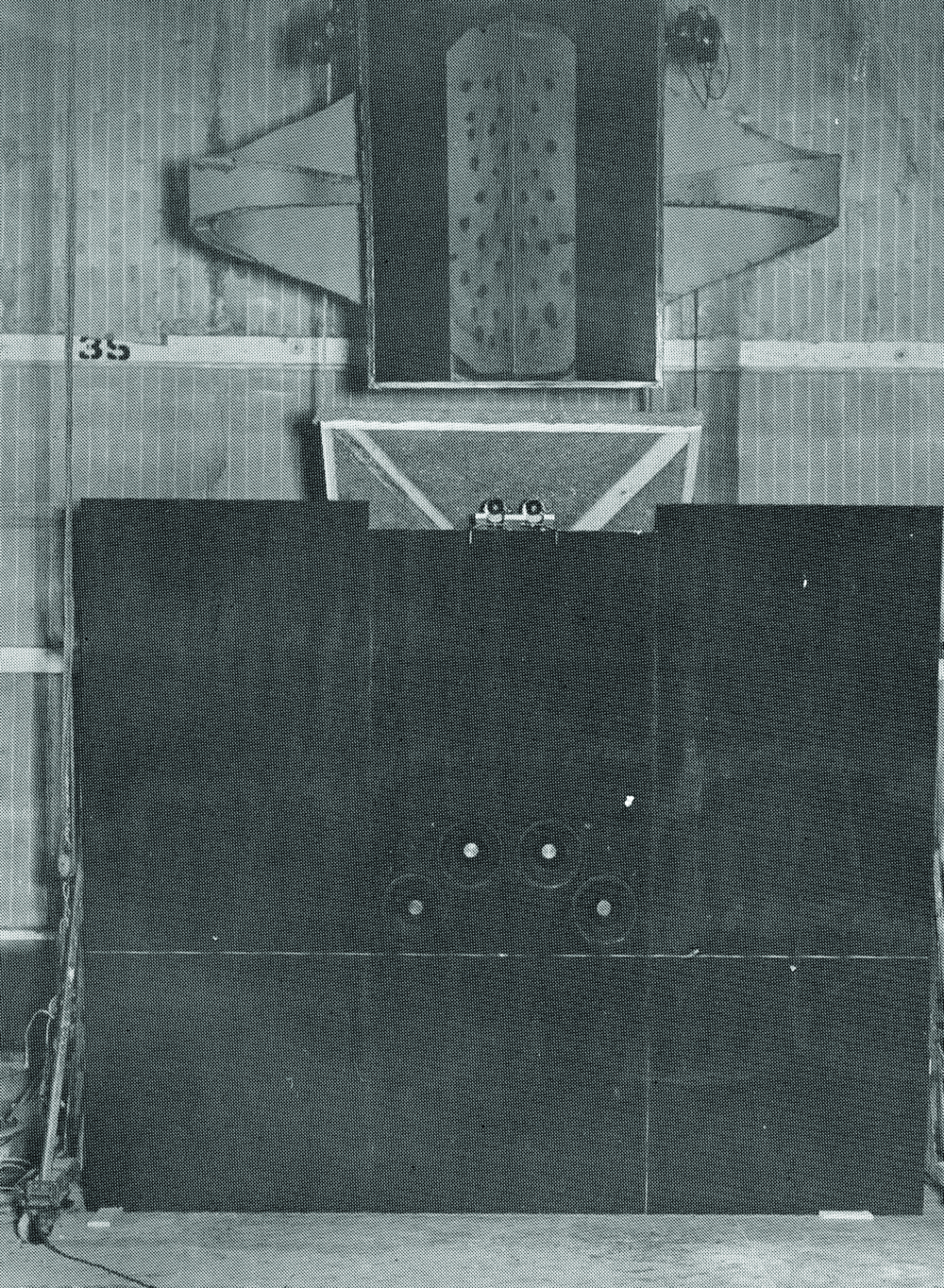
However, by 1933, audiences were starting to demand more substance in the picture content, more consistency in projected images and better-quality sound. The original WE one-way cinema system had used the “snail-shaped” Model 12A horn and the Wente-designed 555W HF drivers. This soon gave way to additional refinements until, by 1931, WE was touting its “Wide-Range” three-way system. In that system, the 12A served as the mid-range device and was augmented with Jensen low-frequency devices and a Bostwick tweeter. Despite the improvements that WE/ERPI and RCA had inaugurated, their cinema loudspeaker systems still had some serious defects.
Tap-Dancing ‘Lesson’
In an oft-told tale, with varying embellishments, Hilliard would regale in relating how, one afternoon, he and others at MGM were listening to a pre-recorded “take” of a tap-dance routine performed by the noted dancer Eleanor Powell. Upon playback, they noted that, for each tap-step recorded, the playback audio contained two distinct tap sounds.
The cause of the aberration was traced to the varying acoustical path lengths between the long throat length of the mid-range horn, the LF devices and the absence of a correlation between the acoustical device’s sources. By painstakingly adjusting the driver’s mechanical positioning on a minute basis, they were able to correct for the apparent “echo.”
However, the corrective procedure was difficult to implement under actual field conditions. It was also noted that the existing systems were vastly inadequate in larger theaters; in 1933, there were more than 300 theaters in the US with seating capacities of 3,000 to 5,000 people, many of which were acoustical nightmares. Facing these apparent shortcomings, MGM went in search of further refinements.
Bell Labs Prototype
About this time, Bell Labs had demonstrated a prototype stereophonic perception system that was used in a transmission arrangement that had witnessed the Philadelphia Philharmonic Orchestra playing in Philadelphia and being re-broadcast in Washington DC. The system became known as the “Fletcher System” (see related sidebar at the end of this article), inasmuch as it had been developed under the direction of Dr. Harvey Fletcher (see “Industry Pioneers #3: Dr. Harvey Fletcher And The Rise Of Applied Physics In Audio”).
Not only had the Fletcher System proved that the principles of stereo reproduction were valid, and that transmission over long distances (via telephone circuits) was feasible, but the system was comprised of some radically new components that greatly increased the frequency response, dynamic range and reduced the overall distortion to previously unattainable performance levels.11
Shearer Horn System
These developments at Bell Labs and the amazing clarity of the Wente/Thuras loudspeakers did not escape the notice of Hilliard and his colleagues at the Hollywood sound studios. Douglas Shearer, then Director of Sound Technology at MGM, commissioned Hilliard to contact ERPI and seek out an arrangement whereby MGM could acquire sound systems that approximated the Fletcher System’s reproduction capabilities.
Douglas Shearer, then Director of Sound Technology at MGM, commissioned Hilliard to contact ERPI and seek out an arrangement whereby MGM could acquire sound systems that approximated the Fletcher System’s reproduction capabilities.
WE displayed, with an appalling lack of vision, scant interest in diverting its research activities to accommodate a sole potential customer inquiry. The idea languished. When, after a year, Hilliard inquired into what progress had been made, he was advised, “Little effort has been made in this regard.”
Totally frustrated by WE’s lack of interest, Hilliard reported back to Shearer that, if a more efficient and better-performing loudspeaker was to be become available, it would behoove MGM to produce its own product. Shearer agreed, and with the blessing of the studio heads, consequently authorized a budget of “whatever is reasonable” toward attaining that goal. Hilliard, bit in teeth, surged onward in search of a better loudspeaker. Borrowing heavily on the prior work of Wente and Thuras, Hilliard commenced developing a loudspeaker that would incorporate the best principles of designs then available.
Hilliard reported back to Shearer that, if a more efficient and better-performing loudspeaker was to be become available, it would behoove MGM to produce its own product. Shearer agreed, and consequently authorized a budget of “whatever is reasonable” toward attaining that goal.
Hilliard, through his wife, who was engaged in some radiology work at Cal Tech, had become acquainted with Dr. John Blackburn, a Cal Tech professor in Pasadena. Hilliard was to comment, “Blackie became a good friend of mine. One day, while we were discussing what to do about loudspeaker units, it was suggested that a fellow by the name of Jim Lansing might be available to do some [loudspeaker] manufacturing.”
Hilliard’s Alliance With Lansing
Hilliard and Lansing, on at least one occasion, had the opportunity to discuss the shortcomings of WE’s then-touted Wide-Range system, and what could be achieved with some additional developments. A “sort-of-a-fact” alliance developed, and the three men continued to explore means and methods of implementing more satisfactory devices (see “Industry Pioneers #17: James B. Lansing: A Legacy In Sound”).
Hilliard suggested to Lansing that Blackburn would be a valuable asset in the design work being considered. With that team in place, Hilliard had what he considered a willing and reliable source of manufacturing at hand, and he began to design the MGM system based on what he perceived to be Lansing’s available manufacturing resources. LMCo (the Lansing Manufacturing Company) proved capable of the tasks assigned and began designing and producing components to conform to Hilliard’s dictates.*
[*NOTE: The exact sequence of how the relationship developed between Hilliard, Blackburn and Lansing varies, and is dependent on whose historical notes one consults. However, the salient point is that the three men did form an alliance that resulted in the design of the Shearer Horn System.]
Shearer Horn Design
In keeping with the Wente-Thuras principles, Hilliard was quick to adopt the concept of using multi-cellular high-frequency horns to avoid overlapping and lobbing from adjacent horns. Another consideration was to avoid multi-path interferences between low-frequency and high-frequency component paths. Mechanical alignment of the two paths was recognized as being necessary to avoid multi-path interference and subsequent distortion. (Despite some remarkably self-serving pronouncements, time alignment was not “discovered” in the 1970s.)
Dr. Harry F. Olson, at RCA, was of the opinion that a “folded-horn” low-frequency enclosure could resolve some of these adverse effects. Hilliard, who had previously favored a straight horn design, concurred.
The problem of differences in efficiency between the low-frequency and high-frequency component drivers continued to present itself, and the dire effect of attendant divergent path lengths of the acoustical transfer devices remained apparent.
Dr. Harry F. Olson, at RCA, who had wrestled with the same phenomena, was of the opinion that a “folded-horn” low-frequency enclosure could resolve some of these adverse effects. He suggested to Hilliard that an RCA “folded-horn” might be the solution. Moreover, because of its smaller physical size, a folded-horn would lend itself to better placement behind screens in cinema projection situations.
Hilliard, who had previously favored a straight horn design, concurred. Subsequently, the final version of the Shearer Horn System would take the form of a series of multi-cellular high-frequency horns and bass-loaded low-frequency horns. In actuality, the efficiency differences achieved would prove to be less than .5dB, resulting in minimum necessity for shelving and less than 1.0 milli-seconds in path delay. A remarkable achievement for the times.12
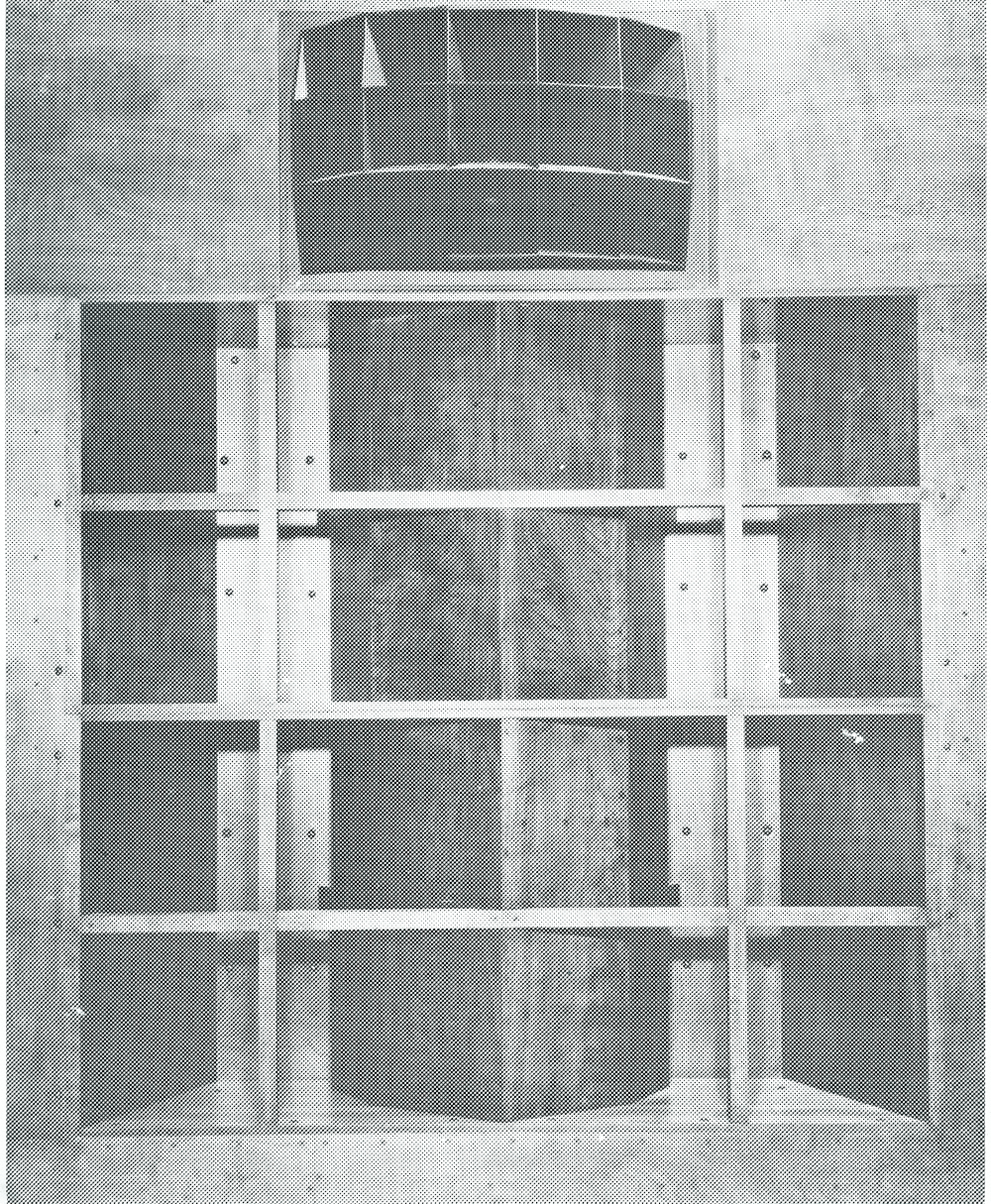
In a practical sense, Hilliard was also cognizant of the vast disparities in the size and acoustical conditions of the cinemas in which such equipment would be utilized. As previously noted, many of the theaters that were converted for talking motion pictures were grandiose palaces constructed with much more of an eye to aesthetics than acoustics.
These observations led to the development of a series of multi-cellular horns that would provide coverage in any number of widely divergent auditorium dimensions.13 Similarly, numerous academy papers and appearances before theater owners addressed the ways and means of improving sound in cinemas. None of these was, in any way, “manufacturer-specific,” and an even hand was used in presenting the various recommendations.
Shearer Horn’s Success
The combined efforts of Hilliard, Lansing, Blackburn and other notable contributors culminated in the introduction of the Shearer Horn in 1936, an exercise that ultimately earned them the Technical Excellence Award from the Academy of Motion Pictures.14
The success of the Shearer Horn and the later development of playback systems by Lansing/Blackburn subsequently would result in smaller-profile systems that would find favor with recording studios, screening studios and, ultimately, hi-fi consumers. Robert Lee Stephens who, as a young engineer/draftsman with MGM, had collaborated with Hilliard in the design of the geometry of multi-cellular horns, went on to form Stephen’s True-Sonic and further enhanced the production of high-quality transducer technology.
Factors That Shaped The Industry
As noted15, several factors came into play between 1936 and 1941 that significantly influenced the state of the audio manufacturing industry:
- 1936: Western Electric divested itself of ERPI, and the All Technical Service Company (Altec) was born.
- 1938: The US Justice Department issued a consent decree that forbade WE from leasing equipment to theater (cinema) owners.
- 1939: Jim Lansing’s business partner and financial manager was killed in an airplane accident. His company, LMCo, floundered.
- 1940: Hilliard recommended to George Carrington, president of Altec, that the firm acquire what remained of LMCo.
- 1941: Altec acquired the assets of LMCo, and Altec Lansing Corp. was formed. Lansing joined Altec as VP of Engineering, with a five-year non-compete agreement.
- 1941: Western Electric ceased the manufacturing of cinema sound reproduction equipment and, without requiring royalty payments, authorized Altec to commence producing existing WE products.
With these developments, Altec Lansing became the preeminent supplier of audio equipment to the cinema industry, a position it would enjoy for several decades.
Hilliard Moves To MIT
In late 1941 or early 1942, Dr. Blackburn convinced Hilliard that he should join the wartime research that Blackburn was heading up at MIT. Hilliard headed for Cambridge. (Hilliard maintained a meticulous record of his technical papers. However, the collection is almost completely devoid of any personal correspondence. Consequently, there are scant records of his activities during this time. Either he elected not to retain his personal papers or they were not made a part of his collection. If such personal papers were maintained separately, it appears they have been lost to the ages.)
One of the major projects at MIT was the development of the MAD (Magnetic Anomaly Detection) equipment used by the allied navies to hunt out enemy submarines. This involved a substantial amount of research in electro-magnetism and the employment of permanent magnet materials suitable for the project.
Hilliard And Altec Lansing
When Altec Lansing was subsequently chosen as the prime contractor for this equipment, Hilliard was transferred back to the West Coast, where he was named chief engineer with Altec Lansing, and assumed responsibility for overseeing the production of equipment for the project.
At the time, some 97% of Altec Lansing’s engineering and plant capacity was devoted to military contract apparatus. Inasmuch as cinema film production was considered to be a vital morale booster (and a valuable propaganda distribution activity), the production of apparatus for the cinema industry was allowed, albeit in a limited fashion, to continue.
Based on what had been developed by MIT and through additional in-house research, it became apparent that the findings in electro-magnetism could materially improve the quality and performance of loudspeaker driver assemblies. With an eye to the resumption of peacetime production, development of permanent-magnetic drivers utilizing Alnico V material was to continue.
The Altec Lansing 604
The first permanent magnet loudspeaker to roll out of production at Altec Lansing was the Duplex model 604. Initially conceived as an electro-magnet-equipped device (Model 601 15-inch Duplex), it quickly evolved into the 604. Some evidence would indicate that a few of the early 604s were built using the frame assemblies from the by-then-scrapped 601 project. The salvaged frames of these rather rare units show evidence of, and were marked with, a logo that clearly traced their beginnings as a component of the 601. (Only some 50 to 150 Model 601 units were produced.)
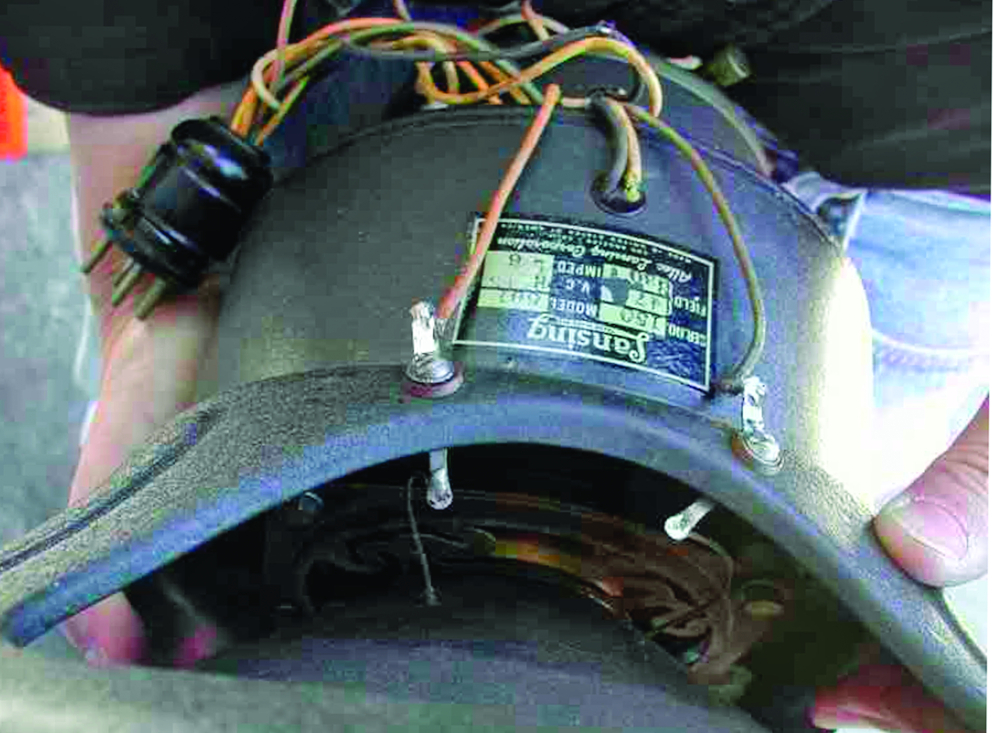
Altec was to confuse the issue further when, around 1952, the company introduced a 12-inch Model 601 that had no foundation in the earlier 15-inch 601. A paper authored by Alex Badmaieff for the AES Journal (Vol. 36, No. 9, September 1952) describes the 601 in detail.
The 604 was introduced in 1943 in a paper presented to the SMPE by James Lansing. Further development of this permanent-magnet technology came swiftly.
Voice Of The Theatre
Although incremental improvements had been introduced, there was no major new technology in cinema loudspeaker systems since the introduction of the Shearer Horn in 1936. This changed in 1945, when the Voice of the Theatre series of loudspeakers (jointly developed by Hilliard and Lansing) was introduced.16
Hilliard and Lansing’s breakthrough with new Alnico V permanent-magnet HF and LF loudspeakers improved HF diaphragm production technology. Field-replaceable, self-aligning diaphragm assemblies, new crossover technology and improved low-frequency bass-loaded horn designs swept the market and ensured the company a dominant position in the cinema loudspeaker market for the next 40 years.
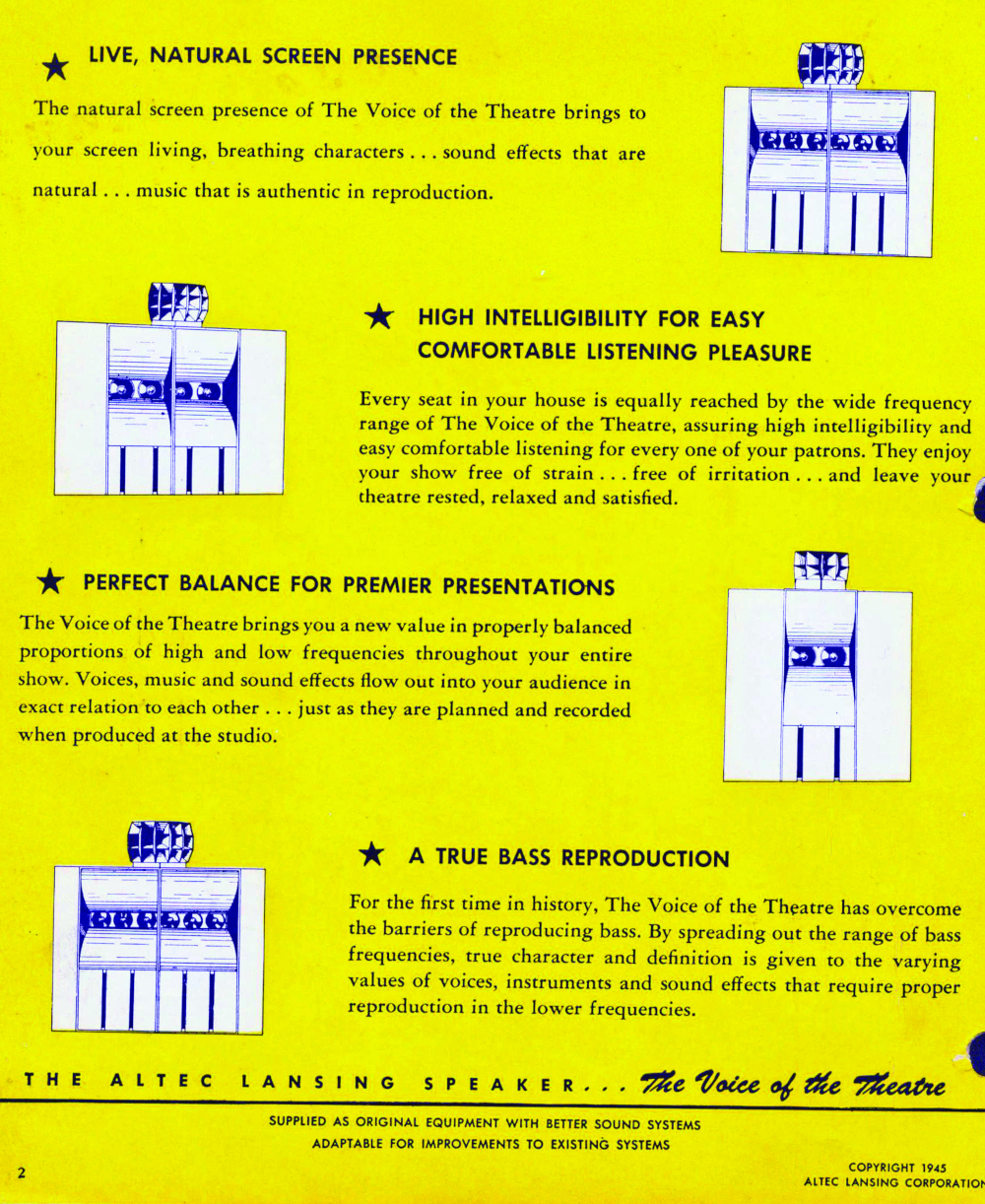
Lesser entities were swept away, and even industrial giant RCA saw its market share dwindle to a mere 10% or 15% of the cinema market. Competitors essentially were no longer serious candidates for consideration in the face of Altec Lansing’s dominance of the cinema industry. The company’s Voice of the Theatre products became the de facto standard for cinema installations; all others were simply advised to please apply at the back door.
Altec Lansing’s A-7, introduced in 1955, was produced in a variety of configurations and became a familiar sight in cinema, sound-reinforcement, recording studio and musical instrument (MI) markets, and formed the basis for many early versions of consumer hi-fi models. Indeed, the A-7 loudspeaker probably is as well recognized as the Shure Model 55 when one identifies vintage sound systems. In its various configurations during the lifetime of its production, the A-7 and its components took on the form of at least 75 different Altec Lansing-produced loudspeaker systems.
Hilliard And Altec Lansing
As a result of the acquisition of LMCo in 1941, James B. Lansing had been appointed as VP of Engineering for Altec Lansing, a position he held until his non-compete contract expired in 1946. At that time, he resigned to once again form his own company.17
During his five-year tenure with Altec Lansing, James Lansing was often at loggerheads with George Carrington, president, and John Hilliard, then VP of Product Research and Development. Despite their earlier friendship, Lansing and Hilliard very much became adversaries, and there are numerous reports of intense acrimonious verbal encounters between the two men. After Lansing left in 1946, Hilliard assumed the position as VP of Engineering, a position he held until 1959, when he became director of research at Ling-Temco-Vought (LTV). (Altec Lansing had been acquired by LTV in 1958; the Lansing part of the name was dropped, and the entity became Altec Corporation, a division of LTV Industries.)
In his new position as VP of Engineering at Altec Lansing, Hilliard had also assumed the mantle as the primary spokesman for the company. Between 1946 and 1949, he authored what seemed to be an article and/or a paper a month.
In his new position as VP of Engineering at Altec Lansing, Hilliard had also assumed the mantle as the primary spokesman for the company. It was a role for which he was well suited. Between 1946 and 1949, he authored what seemed to be an article and/or a paper a month on such subjects as testing for inter-modulation distortion; triode vs. beam-power tube characteristics; the impact of the new FM broadcast requirements for increased audio bandwidth and less distortion characteristics; and descriptions of further development in dual-cone loudspeaker construction. (Over the course of his career, 1931-1987, Hilliard authored 86 published papers/articles and innumerable unpublished technical notes for the Academy and SMPE.)
Undoubtedly, and understandably, his subjects were frequently fostered by Altec’s development of new products and procedures. However, his papers were well founded and based on meticulously documented findings. One could hardly accuse Hilliard of generating advertising “hype” when he delved into the need for ample negative feedback with attendant low impedance characteristics for the stabilization of beam-power output tubes for high-power audio amplifiers.
Microphone Technology
Altec Lansing had inherited a number of WE microphone products by virtue of the company having assumed responsibility for manufacturing previously produced WE products. These included such venerable standards as the 632, 633 and 639—all dynamic, moving-coil-type units—and, in the case of the 639, a combination moving-coil/velocity device that allowed adjustment to create varying pickup patterns. In the case of the 639A, the unit closely paralleled Harry Olson’s RCA models 55DX and 77DX units.
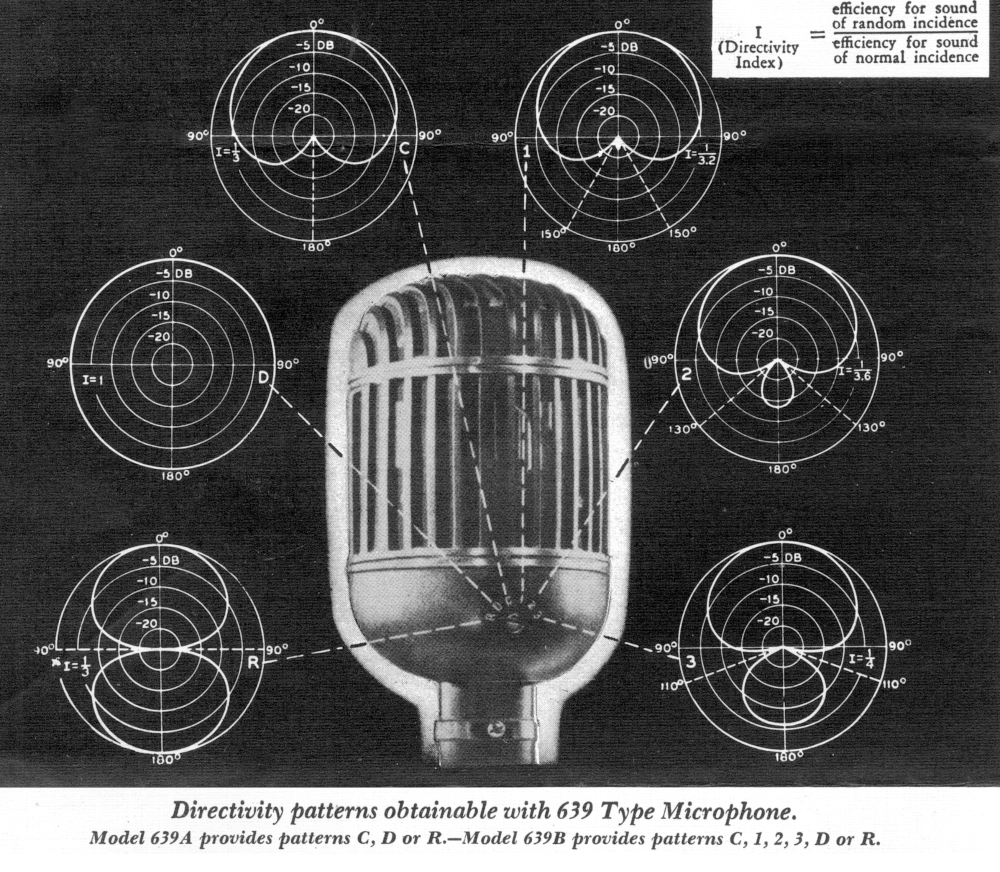
In 1949, Western Electric abandoned the remnants of its production of microphone sound production equipment and passed what remained of that aging product line to Altec Lansing. The microphones noted earlier were fully 20 years old, and new developments by manufacturers such as Shure Brothers, Turner, American and University Sound had eclipsed these older designs. (Remarkably, units such as the 632, 633 and 639 would continue to remain in production well into the late 1960s18.)
A pursuit that would thrust Altec into the microphone market and Hilliard into the limelight was the development of a subminiature condenser microphone that caught the leading manufacturers of microphones quite by surprise. Electrostatic (condenser) microphones, in various forms, had been in existence since E.C. Wente had first developed the technology in 1917. However, prior units were large, cumbersome devices that had seen limited use in motion picture and some recording applications.
In 1949, the field (at least in the United States) was dominated by dynamic moving-coil units and a smattering of ribbon (velocity-type) devices. In its initial venture into microphone development, Altec chose to champion the electrostatic position. The result was the revolutionary Model 21 capsule. (In Europe (notably in Germany) development of large-format condenser microphones had pressed onward and subsequently found widespread application in the European recording and broadcast fields (see “Industry Pioneers #8: Georg Neumann, Microphone Pioneer”).
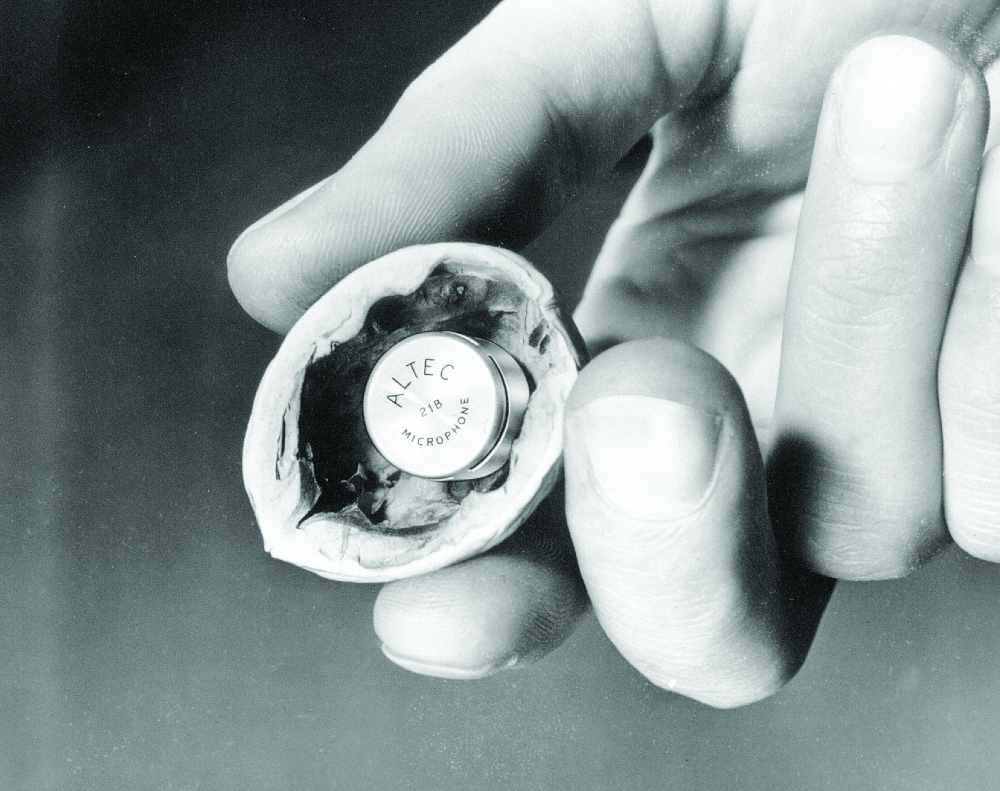
Commercial Success
Almost instantly, the Model 21 was a commercial success. Altec, sensing further applications, was quick to start developing additional adaptations for telephone, medical and military uses. A host of products built around the 21 capsule was quickly brought to the market, some more successfully than others. Hilliard’s wife, Jessamine, was a medical doctor on staff at UCLA Medical Center and specialized in the cardiovascular field. Undoubtedly, his wife’s influence led Dr. Hilliard19 to embark on a program that saw the new 21 capsule employed in several versions intended to facilitate the medical diagnosis of heart conditions.
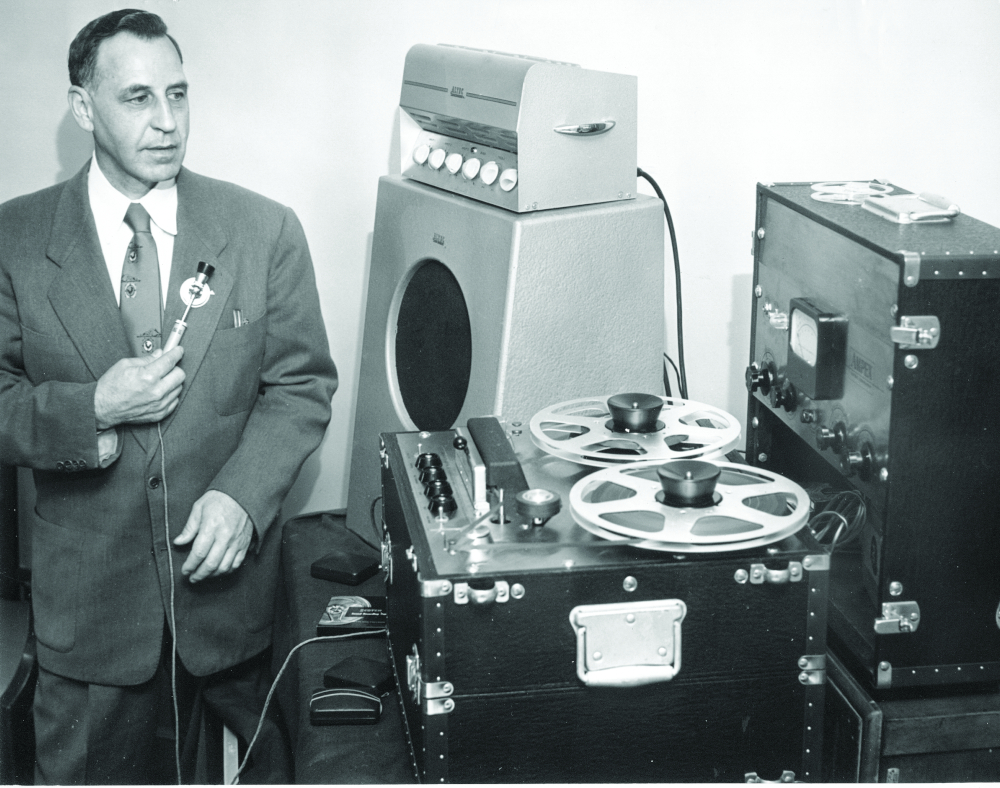
One of the prime developers of the Model 21 capsule and the subsequent Model 11B microphone was Dr. Paul S. Veneklasen who, at the time, was a staff physicist at Altec Lansing. It has been reported widely in some circles that Veneklasen was forever miffed that he was not given adequate credit for his work, a contention that still is advanced by some Veneklasen supporters; alas, some rumors die hard. (A more likely reason for Veneklasen’s attitude was fostered by his perception that he had been denied due credit for his work in the development of transducer polar patterns.)
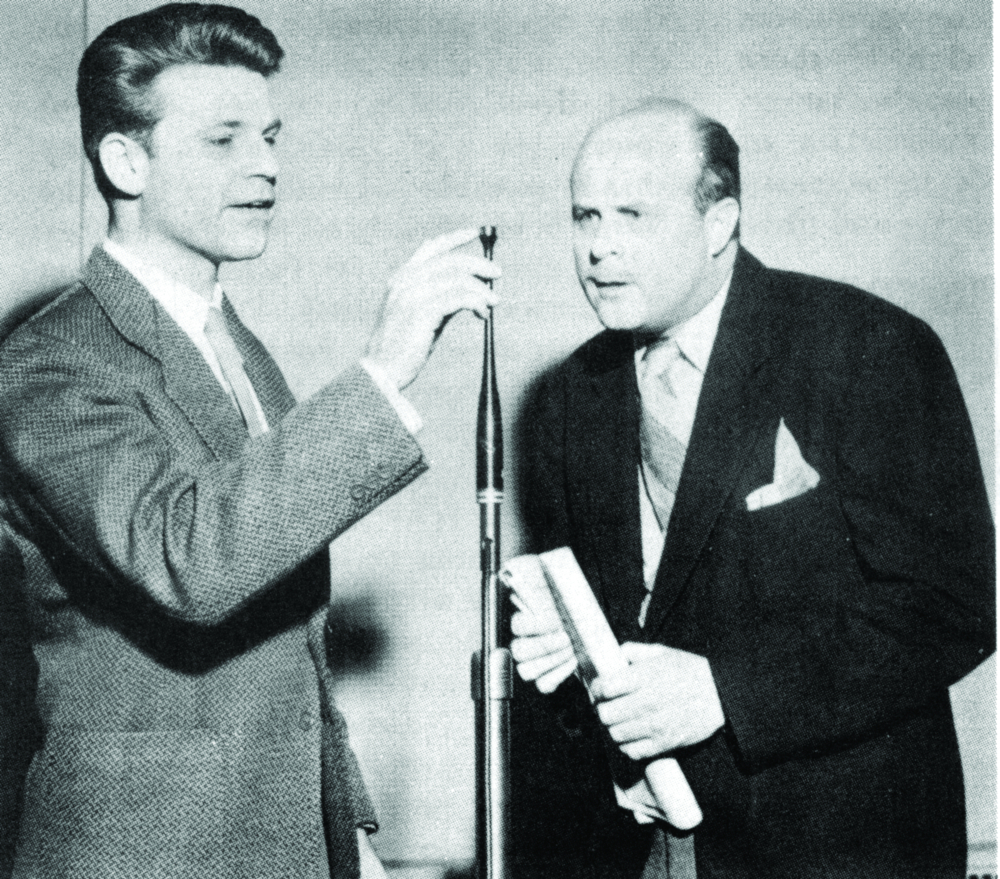
The bottle-shaped Model 11B quickly found favor with entertainers, who appreciated its improved sonic characteristics and its unobtrusive slim profile. The 3/4-inch base housed a miniature vacuum tube and the required connector to provide operating voltages from an external power supply and the delivery of the produced audio to an external preamplifier. The device spawned the development of what was to become a growing trend in the manufacture of electrostatic devices.
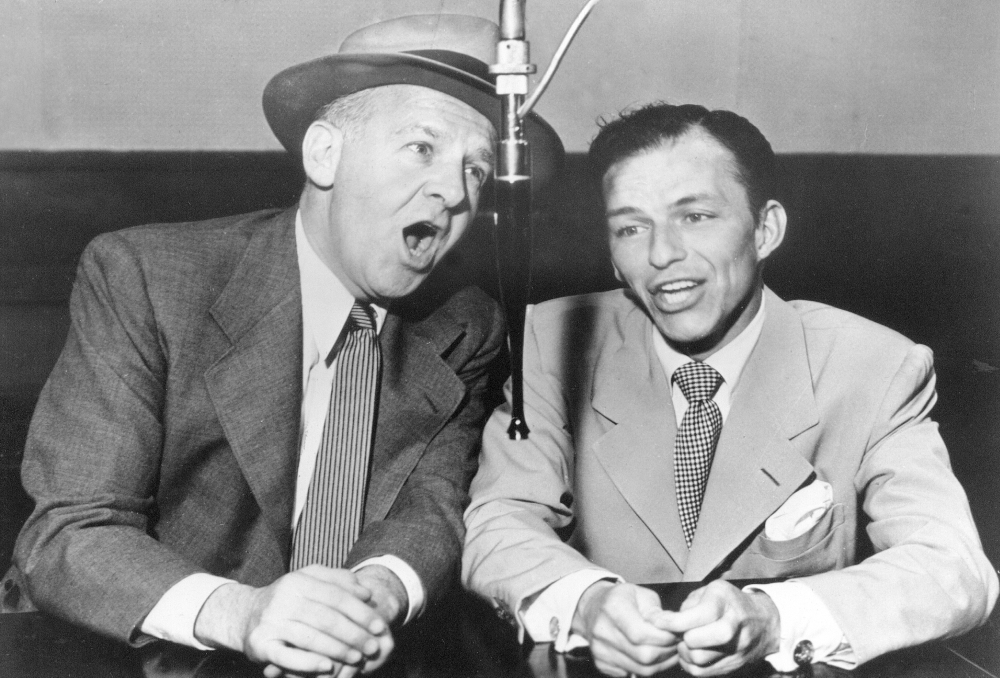
Further improvements in the miniaturization of vacuum tubes allowed Hilliard to model a newer version that he constructed using one of his wife’s empty lipstick tubes. This would become famous as the “Lipstik” microphone. In various versions, this mic would remain in production until the 1970s.
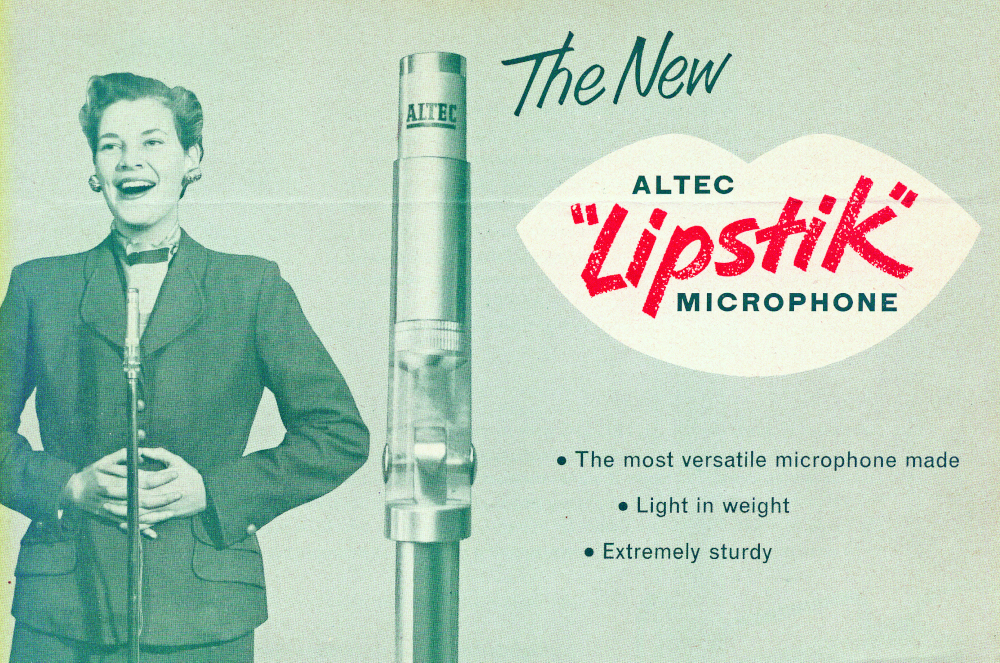
Developments In Electronics
Prior to 1950, Altec Lansing was first and foremost an acoustical transducer (loudspeaker and microphone) developer and manufacturer. There had been some early work on the design of power amplifiers, but those efforts were secondary to the company’s main thrust. As Alvis Ward assumed the presidency of the company and Hilliard gained a stronger foothold, more and more attention was given to the design and production of complementary electronic products.
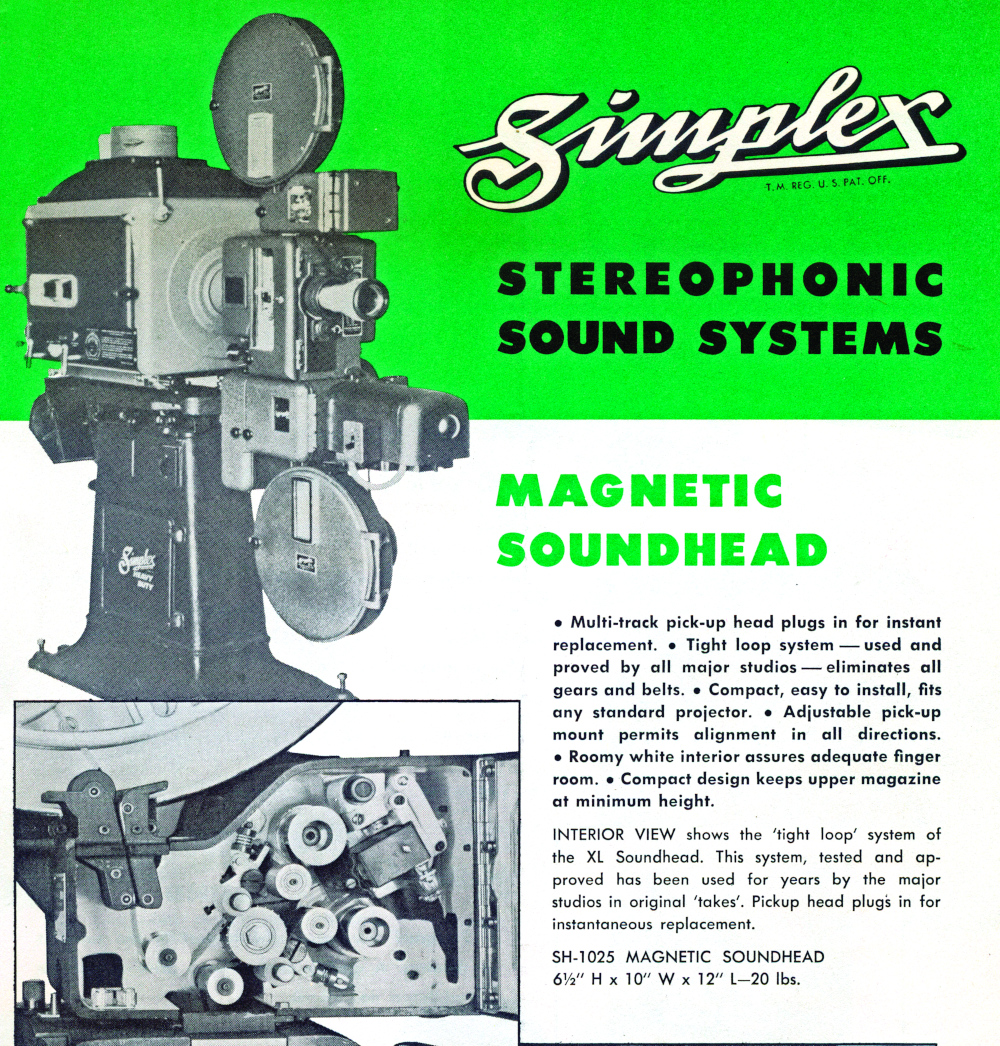
The application for audio mixing consoles was confined largely to broadcast and recording studios. Rarely were such units found in sound-reinforcement applications. This changed radically with the introduction of the Model 250A and 230B mixer assemblies. Differing only in the number of input channels, both the 12-in (eight mic, four line)/two-out 250A and the eight-in/two-out 230B employed a plug-in preamplifier, line driver modules and a field-replaceable power supply.
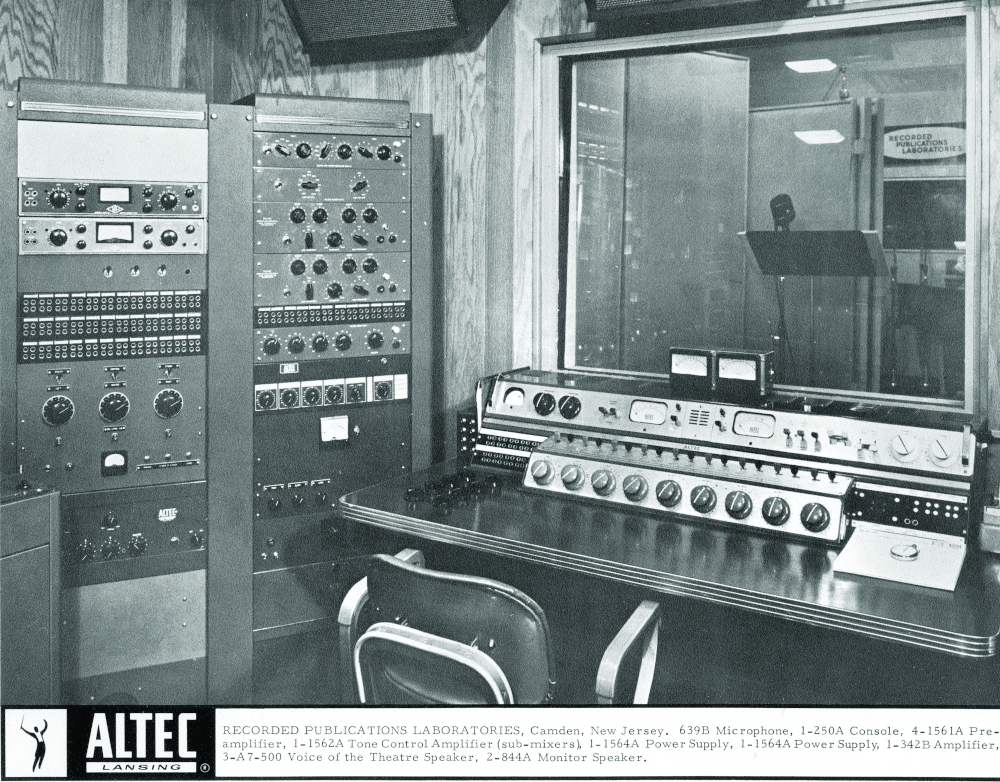
The units’ operational characteristics and gain structure were described in a paper authored by Hilliard in September 195221. The units were grabbed up by the broadcast and recording industries and quickly found increasing application in sound-reinforcement situations.
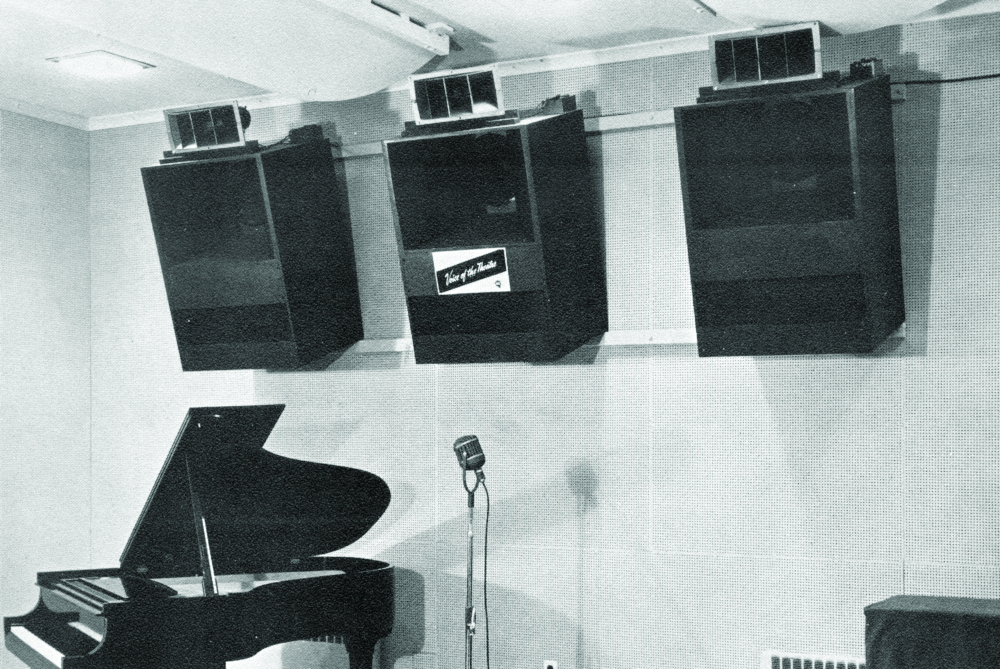
Pioneering work done in the 1940s by Hilliard on the advantages of using beam-power tubes with suitable negative feedback, as opposed to convention triodes, led to the development of power amplifiers with increasingly greater output capabilities. Advancements in cinema technology, including Cinerama and Todd-O-Vision stereo playback systems, necessitated the introduction of multiple-channel (including surround-sound) loudspeaker arrays.
This, in turn, required development of multiple-channel power amplifiers. A paper describing systems of this nature then being used in many prestige cinemas was published in the SMPTE Journal in 195322.
Hilliard’s Later Writing
After 1958, Hilliard’s papers took on a different direction. The previous (perhaps overly manufacturer-specific documents) became more devoted to basic research principles and much more mathematical in content. Rather than describing product developments, subsequent papers were more theoretical in nature and leaned more toward test instrumentation with emphasis on noise/control subjects.
For example, in a paper presented to the ASA (Acoustical Society of America), Hilliard explored the subject of test instrumentation necessary for the measuring of environmental noise produced by jet aircraft and missile devices.23 This was followed with additional papers devoted to the construction and commissioning of environmental test chambers.
Rather than describing product developments, subsequent papers were more theoretical in nature and leaned more toward test instrumentation with emphasis on noise/control subjects.
Other work during this era was devoted to miniature transducer systems for high-temperature and space vehicle measurement applications, military listening systems, technology for sonic-boom and ballistic weapon silencing, and improvements in long-line telephone communications. Clearly, Hilliard had essentially turned his back on the practical application of commercial sound equipment in favor of advanced research.
Enduring Interest In Hi-Fi
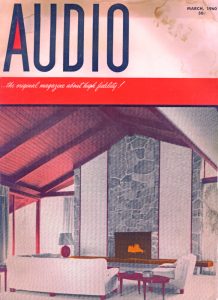
As the 1960s progressed, the American public became increasingly smitten with the lure of consumer-grade component audio systems, and stereo reproduction equipment of increasing complexity drove manufacturing efforts to meet market demand. LTV’s management became enamored with the possible potential profits to be made in what appeared to be a burgeoning market. It was yet to be foreseen that a rapid growth in import products, particularly from Japan, would send American electronic audio manufacturers into a spiraling demise.
It is not clear what, if any, direct role Hilliard played in this scenario; however, he did take a personal interest in the pursuit of home audio systems. A rather elaborate system that he installed in his own residence was featured in several audiophile magazines of the time, and in the popular press. The system, as installed in the Hilliard home, graced the cover of Audio (March 196024).
Electronic Equalization
Audio equalization had long been employed in cinema production; indeed, much of the initial effort in this regard was accomplished by Olson and Volkmann in the early 1930s, activities that could not have escaped the watchful eye of Hilliard. However, the technique had never been applied to sound-reinforcement systems prior to C.P. Boner’s pioneering efforts in the early 1960s (see “Industry Pioneers #11: C.P. Boner: Father Of Audio Equalization”).
Don Davis, in his eulogy of Hilliard25, wrote, “Between 1965-1973, Hilliard and I [along with other contributors] worked closely in evaluating the proper application of 1/3-octave analyzers and equalization in the real world. It was Hilliard’s letter to the president of Altec that rapidly brought the 1/3-octave equalizer to the marketplace. His analysis of the insolvable problems of systems at the time and his view of the virtues of the new approach lent support to my efforts that were never forgotten.”
The results of these efforts were, of course, the implementation of the Altec Acousta-Voicing procedures that revolutionized the state of affairs in the field of architectural acoustics.
Life Beyond LTV
LTV corporate policy dictated that employees had to retire upon reaching the age of 70. In Hilliard’s mind, this was an unnecessary and misguided state of affairs. He abided by the policy, but soon resumed his activities as an engineering consultant to the company. Most men might have been content to rest on their laurels, reflect on their achievements and enjoy a state of retirement. However, Hilliard, in addition to his consulting for LTV, chose to open his own architectural consulting firm. He quickly had a sizeable roster of eager architects clamoring for his services.
Increasingly, Hilliard’s work gravitated more toward acoustical noise-control studies, and he was sought out to lend his expertise in the fields of transportation noise mitigation.
Today, we still reap the rewards of Hilliard’s inquiries and practical solutions to conditions that shaped the progress of the audio industry.
His wife, Jessamine, preceded him in death—a situation that prompted the establishment of the John K. and Jessamine Hilliard Foundation for cancer research at the UCLA Medical Center.
According to his second wife’s accounts, John Hilliard was assisting his stepson in the repair of an automobile when he rose up from under the hood, suffered a massive coronary, and died almost instantly outside his home in Santa Ana CA on March 21, 1989.
Recognition
Over the duration of his distinguished career, Hilliard was bestowed with several prestigious honors. He was a Fellow of the ASA, the AES, the IEEE and the SMPTE. Today, we still reap the rewards of his inquiries and practical solutions to conditions that shaped the progress of the audio industry.
Sidebar: The ‘Fletcher System’
Bell Labs’ Auditory Perception System was a direct outgrowth of a relationship that had evolved between famed orchestral conductor Leopold Stokowski and staff members at Bell Labs. This relationship had commenced as far back as 1925, after Henry C. Harrison at Bell Labs had vastly improved the components that made electrical phonograph disc recording and playback possible.
Stokowski, conducting the Philadelphia Symphony, was one of the first to record using the new electrical process. By 1931, further improvements by Arthur Keller at Bell Labs had extended the frequency response of recordings out to 10,000 cycles, and surface noise had been greatly diminished using new techniques to record on vinyl rather than shellac.
Meanwhile, Dr. Harvey Fletcher, director of Acoustical Research at Bell Labs, and his group were exploring the feasibility of binaural speech in order to better understand how humans hear and how speech intelligibility over the telephone network could be further improved (see “Industry Pioneers #3: Dr. Harvey Fletcher And The Rise Of Applied Physics In Audio”).
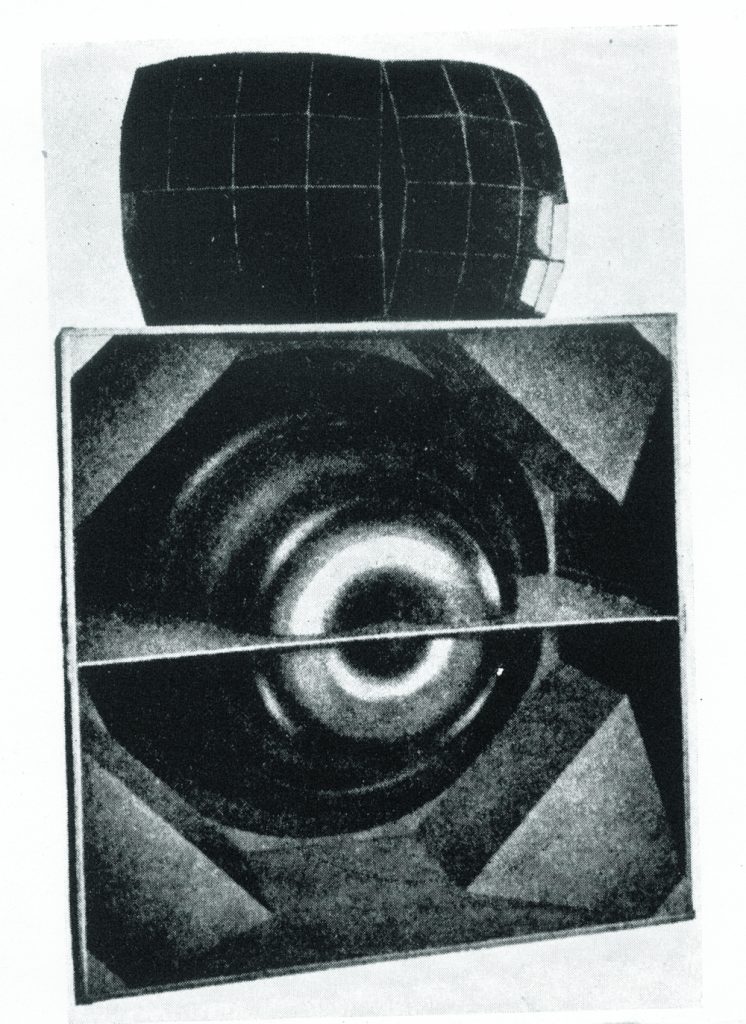
Keller and Fletcher’s two pursuits came together in 1932 when several test recordings were made using two microphones to “cut” dual tracks on a single disk. On March 12 of that year, Stokowski and his orchestra recorded Scriabin’s Poem of Fire as the first-ever binaural, i.e., stereophonic record, although the term “stereophonic” had not yet been coined. [Perhaps some of our younger readers might be aghast to learn that the principles of stereo playback preceded The Beach Boys by some four decades.]
The recording process had been vastly improved, and it was a demonstrative reality that binaural recordings were, indeed, possible. Now, it was necessary to develop the necessary equipment to allow playback of this recorded information. Enter E.C. Wente and A.C Thuras, two other physicists with Bell Labs, who were instrumental in the advancement of sound technology. With guidance from Fletcher, the two set about to develop an audio playback system that would adequately demonstrate the capabilities of the new developments.
Wente and Thuras’ efforts were admirably acclaimed when, on April 27, 1933, a three-channel transmission (over specially conditioned telephone lines) and an accompanying three-channel playback system was set up between the Academy of Music in Philadelphia and subsequently reproduced to an audience at Constitution Hall in Washington DC. Dr. Frank B. Jewett, president of the Bell Telephone Laboratories, was to describe the event to the National Academy of Sciences in what is related below in a somewhat abbreviated version of his original words:11
“Microphones picked up the music of the Philadelphia Orchestra; the music was transmitted to Washington DC, amplified and projected from three loudspeakers….
“As part of the demonstration, a number of experiments were performed by Dr. Fletcher. These experiments included the sounds of a carpenter and his helper conversing on the stage at the Philadelphia location, a soloist who sang while strolling across the stage and a trumpeter [in Philadelphia] playing antiphonally with another trumpeter on the opposite side of the stage at the Washington location.
“It was only when the curtain which hid the loudspeakers was raised that the audience in Washington could believe that what they had heard had not happened on the stage before them.”
References
- Richland County registrar’s records indicate that the earliest record of his parents having acquired property in Wydemere is dated 1899.
- Undated newspaper clipping, The Saint Paul Pioneer Press (circa 1926).
- Hilliard, John K., Federal Government Form DD48; Personnel Security Questionnaire: Personal History Statement (exact date obliterated); The Hilliard Collection.
- Hilliard, John K., “Movie Sound Reproduction,” Audio Magazine, March 1977.
- Recording Sound for Motion Pictures, edited by Lester Cowan; McGraw-Hill Book Company Ltd., New York NY 1931.
- Uzzle, Ted, Making Movies Talk, self-published: Oklahoma City OK, 1990.
- Hilliard, John K., “Movie Sound Reproduction,” Audio Magazine, March 1977.
- Hilliard, John K., “Movie Sound Reproduction,” Audio Magazine, March 1977.
- Hilliard, John K., Motion Picture Sound Engineering, D. Van Nostrand Company, Inc., New York NY, 1938.
- Hilliard, John K., Unpublished Committee Reports. Questionnaires, Abstracts and Other Materials; Research Council of the Academy of Motion Picture Arts & Sciences, 1934-1938, Hollywood CA.
- www.widescreenmuseum.com/sound/bellpage7.htm
- Hilliard, John K., “Basic Sound Recording and Reproducing Practices” between 1927 and 1940, SMPTE Journal, February 1983.
- Hilliard John K., A Study of Theatre Loud Speakers and the Resultant Development of the Shearer Two-way Horn System, Academy Research Council, March 3, 1936; AES Journal reprint November 1978, Vol. 26, No. 11; Davis, Don, Editor.
- Hilliard John K. and Kimball H.R., Dividing Networks for Loud Speaker Systems, Academy Research Council, March 3, 1936; AES Journal reprint November 1978 Vol. 26, No. 11; Davis, Don, Editor.
- Read, R. David, “Industry Pioneer: James B. Lansing, (1902-1949)” Sound & Communications, October 2007.
- Lansing, J,B. and Hilliard, J.K., “An Improved Loudspeaker System for Theaters,” presented May 14, 1945, at the SMPE Technical Conference in Hollywood CA; subsequently published in the Journal of the Society of Motion Picture Engineers, Vol. 45, November 1945, pp. 339-349.
- Read, R. David, ibid.
- Author’s interview with Bill Hayes, who served as chief engineer in the acoustics lab at Altec from 1958 through 1985.
- Hilliard received an Honorary Dr. Sc. from Hollywood University in 1950.
- Audio Engineering, April 1949.
- Reprint from Tele-Tech, September 1952.
- Hilliard, John K., “Loudspeakers and Amplifiers for Use with Stereophonic Reproduction in Theatres,” SMPTE Journal, Vol. 61, September 1953, pp. 380-389.
- Hilliard John K., and Fiala, Walter T., “Methods of Generating High-Intensity Sound with Loudspeakers for Environmental Testing of Electronic Components Subjected to Jet and Missile Engine Noise,” JAZA, Vol. 30, No. 6, June 1958, pp. 533-538.
- Audio Magazine, March 1960.
- Davis, Don, ”In Memoriam,” Journal of the Audio Engineering Society, Vol. 37, No. 6, June 1989.
This article was originally published in the June and July 2008 issues of Sound & Communications.
Click here for more of Sound & Communications’ “Industry Pioneers” series.
